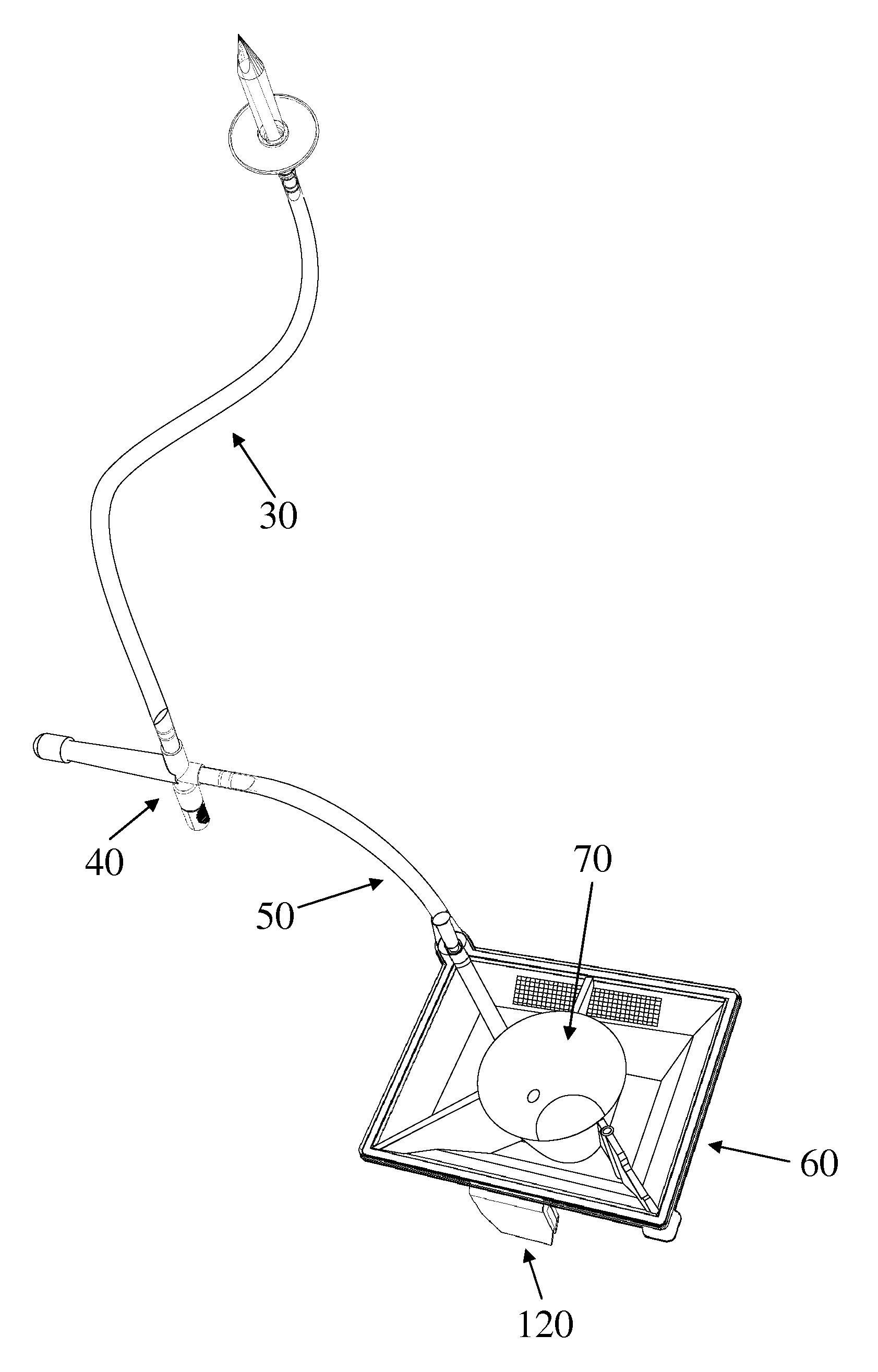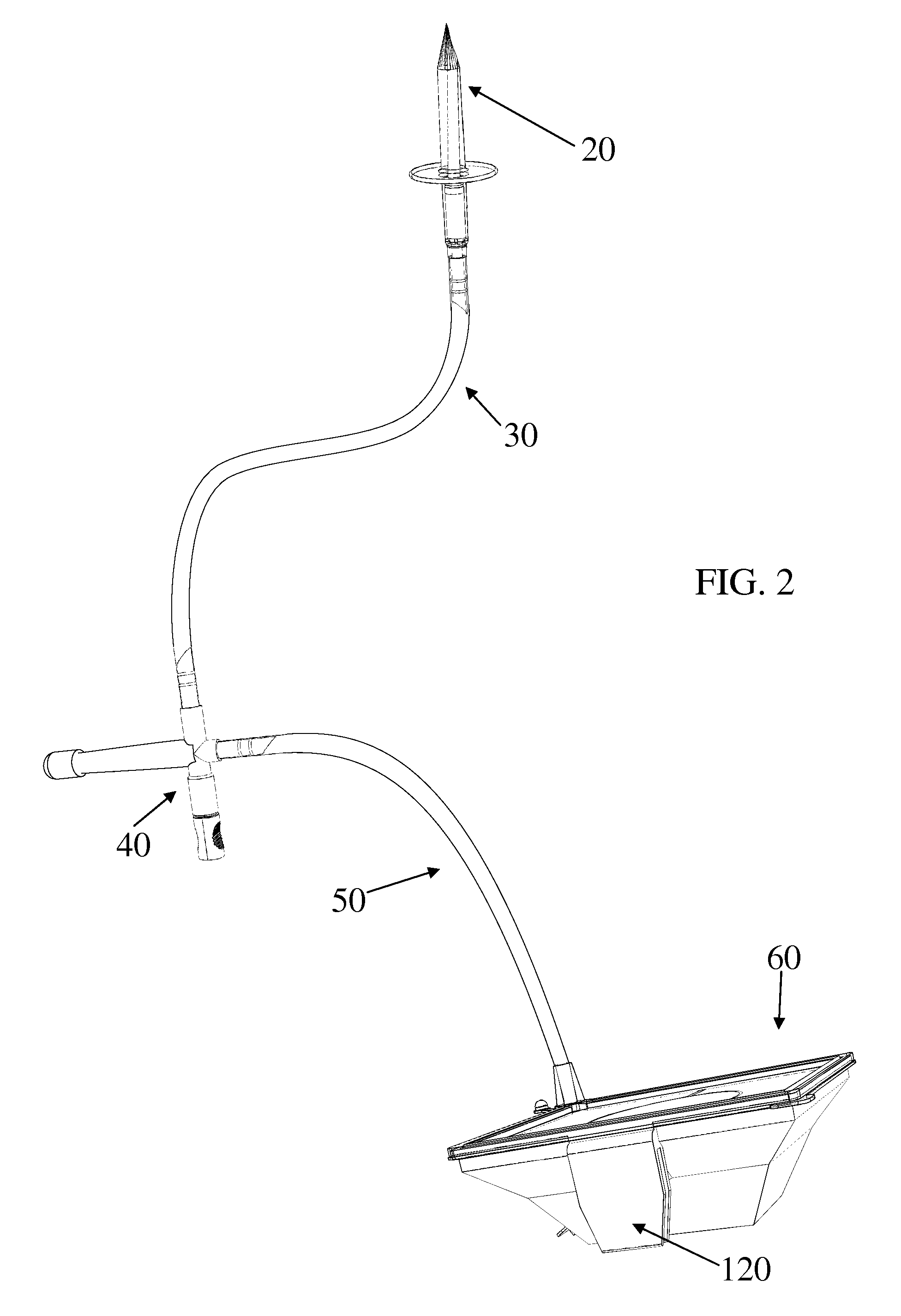Another distinguishing feature to the current models is that the
uterus, when it is deposited inside the
collector device, creates a turbulence, constantly and violently removing the embryos and mucosal until they are trapped on the mesh; this design unfortunately, encourages physical abuse of the embryos and exposes them to be embedded in the mucous membranes, where it is very difficult to see, and worse still, to extract them.
In what has been mentioned, there is another undesirable, but real, technical feature in all current models, in that it is impossible to wash the mesh in the correct direction to detach the mucosal trapped in it; all the technical operators who want to detach the mucosa trapped in the mesh are forced to use a jet wash to try to separate the
mucus.
Washing and rinsing the mesh correctly means retrieving the majority of embryos, however many go unnoticed among the
mucus that fail to be detached, or covered, hidden to the
microscope eye; these are some undesirable technical characteristics.
Another problem of the current system is caused by the location of the
filtration mesh in the inside of the device, such as: 1) the ones that have the mesh in the bottom of a glass; 2) the ones that have the mesh in one side; and 3) the ones that have the mesh in the top of a drainage
tower.
The
diameter of the solution under pressure applied with the
syringe against the mesh is three times bigger than the
embryo and can cause the
embryo severe traumatic damage and possibly death.
A large number of embryos are lost while passing unnoticed between the fragments of mucous that fail and become detached from the mesh, in the same way, some pass unnoticed invisibly to the
microscope, because they are virtually embedded in the mucous membranes and cannot be seen.
Another inconvenience occurs when passing the embryos from the filter to the device for their search, because they can be traumatized and become damaged.
In these systems it is very difficult to detach the embryos and the mucosal from the
filtration mesh.
In all of these models it is virtually impossible for the fluid applied under pressure over the mesh to wash, as it can generate a countercurrent that detaches from the natural side that is stuck there.
This model already became obsolete, leaving the market of this
disadvantage, and because it also recommends washing apart the mesh, rescue the embryos and the mucosal by suction with a
syringe directly in the mesh.
Moreover, in this type of model, it is not only difficult to detach what is stuck, but it is also difficult to wash the mesh without filling the device used to locate the embryos, because it requires a lot of culture medium to do this step correctly, which implies a high technical level, thus cannot be done easily, unless we have available one or more extra devices, for pouring the portion that cannot be fixed in the original container.
Therefore, in these two models there are always going to be a large amount of mucosal stuck in the mesh, in which part of the collected embryos remain hidden.
The technology that has a small mesh in the side, unlike the previous, offers less resistance to the correct wash of the mesh, precisely because of the size of the mesh, which facilitates that the mesh can be washed more easily than previous technologies, although certainly does not guarantee that everything can become detached.
In this system, the filtration and drainage
tower rises through the center of the device and is extremely difficult to extract the mucous and embryos that attach to the mesh, because it cannot be washed in the correct direction to detach what is stuck in the filtration mesh, neither can it be used with a lot of liquid, without over filling the device for the search of embryos, since the problem is aggravated by the fluid excess.
Another important aspect of filtration technologies known in this field, comprises the search for embryos with a
microscope, but this work is affected by different technical factors that by one way or another cause the loss of unnoticed embryos.
None of the already known technologies provide security for finding 100% of embryos that drain from the uterus.
On these devices, the
operating time plays a very important role, however the main enemies of the search are the following operational issues:
3. Difficulty to view and release the embryos embedded in the
mucus.
The devices that do not require devices for the search, all have integrated an area for locating the embryos, being the main operational disadvantages in most of them, the quantity of liquid stored and the depth of the medium, factors that affect the search and location of the embryos in extreme degrees in different ways:
(a) with constant spills over the base of the microscope because the search device is filled up to the top when the filtering mesh is washed to detach the embryos and mucosal;
(b) with the mucous membranes flotation and embryos because the depth does not allow to view with the microscope bottom and the surface at the same time, forcing the
technician to wait several hours until they precipitate;
(c) with the size of the search area because in most of them the size is similar to the conventional
search box.
Problems that affect mainly the system where the side mesh occupies one side of the wall, and the system where the mesh filter is located in a elevated
tower; because in these two models the search area is very large, as large as conventional, not reducing at all the
operating time or the foam problem that forms while trying to wash the mesh, because both spill liquid over the microscope when attempting to locate the embryos obstructing the
visibility and because the two accumulate too much fluid increasing the depth and obstructing the search, especially the one that has large mesh on the side, because this spills without filtering creating the possibility of losing the embryos attached to the floating mucous.
This system technologically left the market in view that all the embryos and mucous were attached to the mesh, which prevented them from being seen, in addition to the excess of stripes and numbers located in the bottom that made them even more difficult to find.
A latest version of this type of device that recently entered the market, to search for and locate embryos, does not improve the search according to the previous system, because the culture volume accumulated is very deep and does not allow viewing at the same time what lies at the bottom and what floats on the surface.
In addition, it is necessary to wait for a long time for the suspended mucosal to precipitate to be able to review them, and neither improves the collection of embryos because it uses the same hose system with bifurcations and connections with internal borders that put at risk the integrity of the
embryo, while pours in a very violent manner the uterus
discharge against the bottom of the device, generalizing the chance of suffering
severe trauma.
Neither improves the
recovery of embryos since all will go along with the mucosal directly in the filtration mesh, causing first the common problem when trying to detach them from the mesh, and second because it is very easy for them to be embedded in mucosal allowing the loss of unnoticed embryo, because it is very difficult to detach them.
The objective being in both systems, avoiding that the embryos and mucosal arrived to the mesh to avoid washing them, which did not occur because the uterus discharge and the drainage system suction forces are strong enough to drag them, in addition to remove and hit them against the walls, which causes embryonic trauma, not overcoming the technology trauma, thereby not solving the problem of the embryos and mucosal attached into the mesh.
Neither resolves the problems of washing the mesh with under pressure
syringe, nor the problem with the foam that is generated when trying to detach them, moreover, the turbulence that is generated with the uterus discharge in the interior of the device cannot be controlled, and does not eliminate the problem of trauma because damaged embryos can still be found.
 Login to View More
Login to View More  Login to View More
Login to View More 


